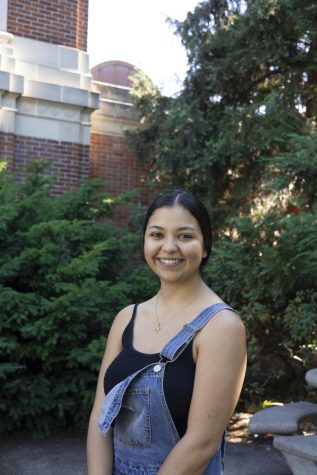Student fees fund services for Oregon State University community
May 29, 2020
The price of tuition at Oregon State University varies based on residency; yet, student fees are a flat rate added to the cost of attendance to fund different student services on campus.
The breakdown of student fees is separated into three main categories, according to Sherman Bloomer, associate vice president of Budget and Resource Planning. These three categories include a building fee, health fees and the student incidental fees.
The building fee is used to repay debts for the construction or renovation of student activities facilities on campus, such as Dixon Recreation or Legacy Fields, whereas the health fees fund Counseling and Psychological Services and other student-health resources.
The student incidental fees are determined through a process in which the Associated Students of Oregon State University’s Student Fee Committee makes recommendations that are approved by the ASOSU government and then recommended to the President of OSU. Ultimately, all fees are approved or denied by the Board of Trustees.
“ASOSU is funded primarily through student fees, and thus is reliant on it,” said Safi Ahmad, the Student Fee Committee Chair. “As SFC Chair for the past student-fee-setting cycle, I led the SFC to recommend an incidental fee to ASOSU Congress and eventually to the Board of Trustees.”
According to the ASOSU Incidental Fee Breakdown, $428.08 was added on to tuition fees for each term during the 2020-2021 academic school year. The money is allocated to 10 different student units, with the biggest dividends going to intercollegiate athletics, facility improvement, the Memorial Union, student engagement and experience, recreational sports, contingency and bad debt, performing arts, ASOSU, the family resource center and the Human Services Resource Center.
Recreational Sports relies heavily on the incidental fees from students, as the fee supports nearly 75% percent of Recreational Sports’ funding, according to Brian Hustoles, marketing and communications manager for Recreational Sports. The other 25% of funding comes from revenue in the form of program registrations, class fees and facility rentals, Hustoles said.
“While the majority of the student body swipes into and uses Rec. Sports facilities each year, a student never needs to physically use our services to benefit from this incidental fee,” Hustoles said. “A healthy community depends on healthy individuals. When our classmates and colleagues are attentive, de-stressed, productive and resilient, we are all better served.”
Over 80 fitness classes a week, 50 intramural sports leagues and 40 Leadership Institute programs are offered through Recreational Sports each year due to the contributions of student fee investments.
Hustoles noted that there is also a significant portion of the money that goes into the employment of over 400 student employees.
Despite COVID-19 canceling the rest of the on-campus academic year, the incidental fee for spring term is still being used to fund Recreational Sports, as it was before.
“The student-fee investment enabled the Rec. Sports team to pivot quickly, creating remote programs for students,” Hustoles said. “Rec. Sports students and staff have developed more than 180 remote programs. Opportunities for engagement include virtual intramurals, more than 40 group fitness classes a week and three Adventure Leadership Institute™ programs that are provided each week.”
The Student Fee Committee not only prioritizes major incidental units like Recreational Sports, but also takes into effect the services offered at OSU for faculty when determining the rates for the following academic year.
These services include raises, increasing health-benefit packages, property insurance and others. While simultaneously factoring services, the committee also takes into consideration the new costs of repairing buildings or hiring new faculty members.
“The fees have always been set to provide a broad suite of services,” Bloomer said. “While an individual student might not use every service, sharing the costs ensures that they are available when students do need them. If students decided not to pay those fees, the staff and services would probably have to be reduced or ended, since the fees are the source of operating funds.”

























































































































